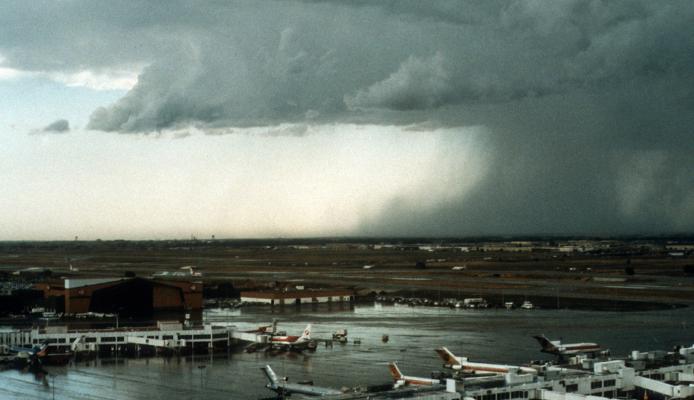
Decision Support Systems

Decision Support Systems
Decision support systems are one of the core technology areas developed at the Research Applications Laboratory (RAL). Generally speaking, a decision support system (DSS) is a computerized system designed to help a user make decisions. RAL has developed DSS's to support users making decisions in a wide variety of settings including aviation, surface transportation, and national security. RAL uses similar processes and components to develop many of its decision support systems.
When Research Applications Laboratory develops a decision support system, the first step in the process is to assess the user's needs for the system and develop a concept of how the system will work. The next step in development of a DSS at RAL is to perform research to identify and evaluate the best components (data and methods) for the given decision support system. This assessment often involves evaluating a combination of mathematic, computer, and atmospheric sciences capabilities. After this research is completed, the decision support system is designed, developed, and transferred into operation. This process can be iterated, as necessary, to address changing user's needs, new data sources, and advancing technology.
Many of RAL's decision support systems contain common sets of components. These components include data related components, algorithm related components, and user interface and display related components. The data related components are made of modules that ingest data, format data, store data, transfer data, and archive data. The algorithm related components utilize diverse methods such as atmospheric models, rule based algorithms, fuzzy logic algorithms, statistical algorithms, and data mining algorithms.
The user interface and display components, which are heavily customized for the user's work environment and operational needs, often employ web technologies to speed development and facilitate access. RAL is often able to reuse or modify components from previous decision support systems for use in a new DSS, greatly reducing the schedule and cost for the new system.
A few examples of decision support systems developed at RAL include:
- Pentagon Shield an airborne-hazard assessment and prediction system to protect the people working in and around the Pentagon.
- MDSS a tool for decision support for winter road maintenance managers.
- LLWAS used to warn of microbursts that could be hazardous to aircraft landing and departing at an airport.
- 4DWX used at army test ranges to provide more accurate go/no-go guidance to testers.
- WSDDM depicts accurate, real-time nowcasts of snowfall rate, plus current weather conditions for use by aircraft de-icing and airport operations users.
RAL continues to develop a wide variety decision support systems, often by leveraging technology from existing systems. If you have interest in utilizing an existing RAL DSS or development of a new decision support system, please contact us.
Auto-Nowcasting
The primary role of the nowcast environment is to collect weather data; execute algorithms for producing a combined thunderstorm forecast; and provide a graphical display tool for viewing the various datasets.
Contact
Seth Linden
Soft Eng/Prog III